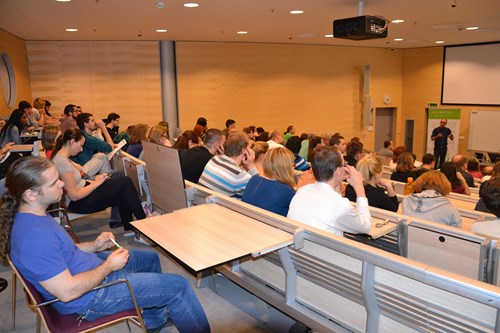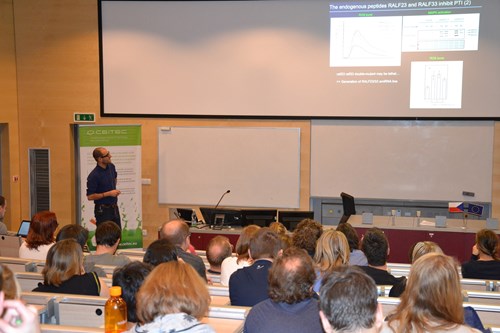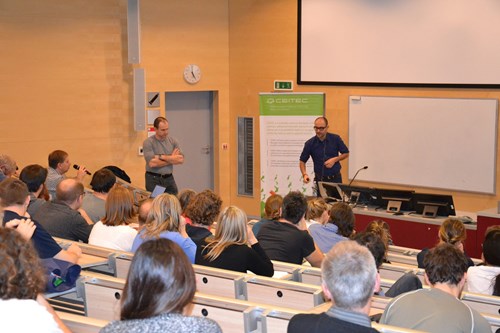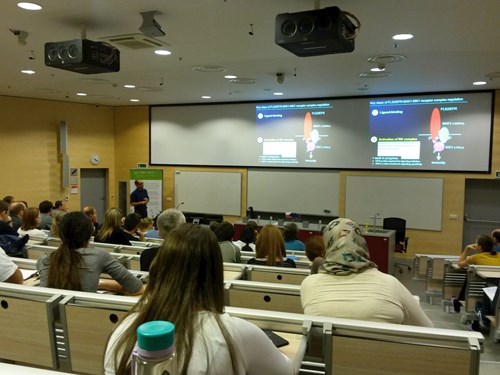About the lecture
The first layer of plant innate immunity relies on the recognition of microbes via the perception of pathogen-associated molecular patterns (PAMPs) by surface-localized receptors called pattern recognition receptors (PRRs). The Arabidopsis leucine-rich repeat receptor kinases FLS2 and EFR are the PRRs for bacterial flagellin (or the peptide flg22) and elongation factor Tu (or the peptide elf18), respectively. Within seconds of PAMP binding, FLS2 and EFR form a ligand-induced complex with the regulatory LRR-RK SERK3/BAK1 leading to phosphorylation of both proteins. FLS2 and EFR) also form a complex with the membrane-associated cytoplasmic kinase BIK1 that get phosphorylated in a BAK1-dependent manner upon PAMP binding. BIK1 is a positive regulator of several FLS2- and EFR-mediated responses. FLS2 and EFR activation lead to several immune responses, including bursts of Ca2+ and reactive oxygen species, activation of mitogen-activated and calcium-dependent protein kinases, and transcriptional reprogramming, ultimately leading to PAMP-triggered immunity. The mechanisms controlling PRR activation at the plasma membrane and regulating intracellular signaling remain however largely unknown. I will present recent work illustrating how activated PRR complexes at the plasma membrane directly engage with downstream signaling, and how these events are tightly regulated by phosphorylation.



